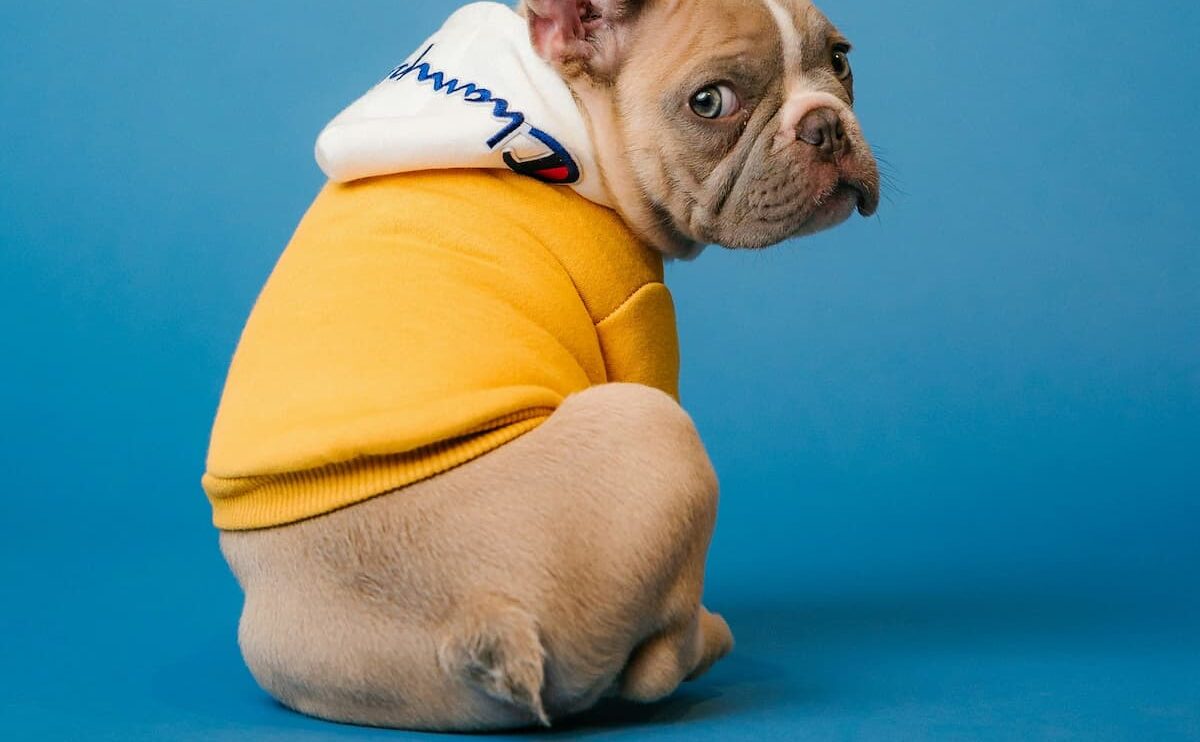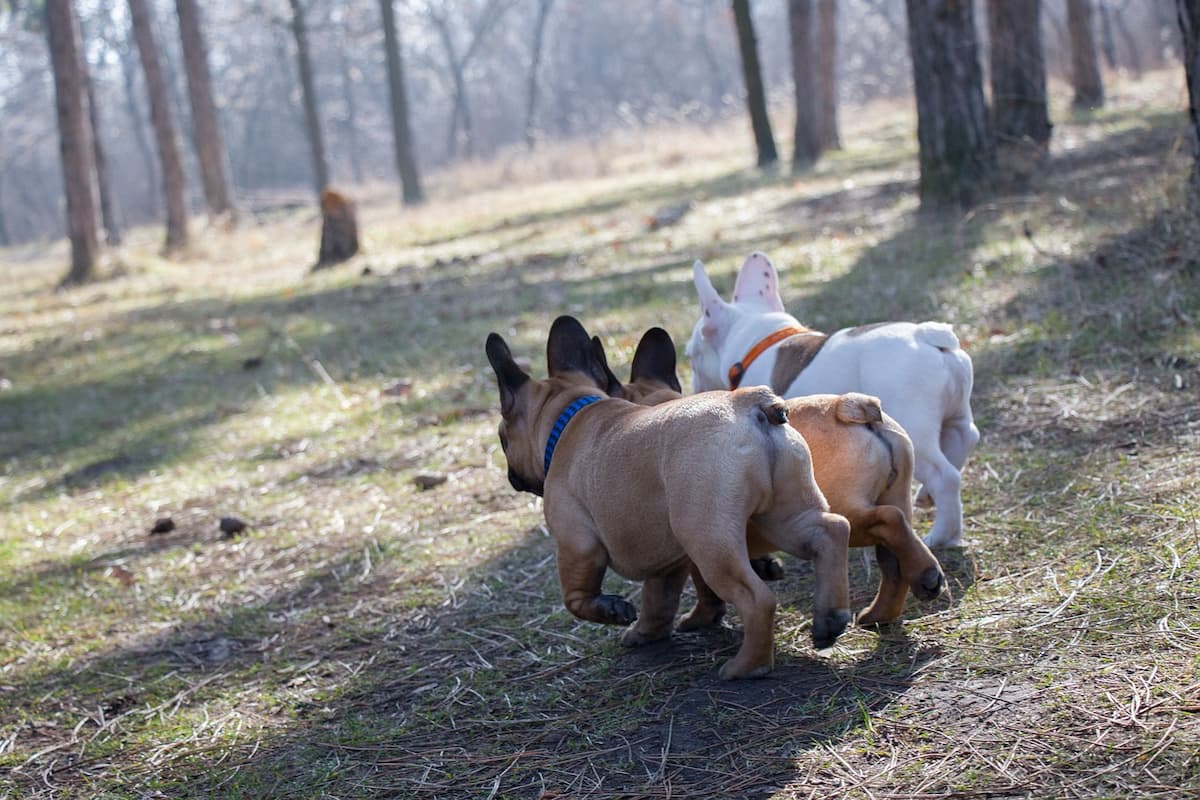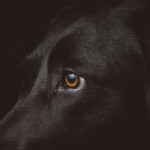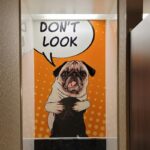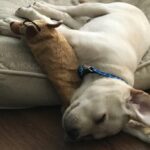Have you ever found yourself innocently pondering over the mysteries of the universe while gazing into your furry best friend’s eyes?
Well, my friend, I’ve got a fascinating query to add to your list: Why do dogs have swirls on their bum?
Yes, you heard that right.
Those mesmerizing little twirls adorning their derriere have sparked curiosity in dog owners and enthusiasts alike.
This article will answer the bizarre question.
Why do dogs have swirls on their bums?
Why Do Dogs Have Swirls on Their Bums?
Have you ever wondered why dogs have those fascinating swirl patterns on their bums?
Well, rest assured, you’re not alone!
This intriguing phenomenon has puzzled pet owners and scientists alike for years.
While it might seem like just another whimsical design on our furry friends, there’s actually a scientific reason behind these mesmerizing patterns.
Firstly, it’s important to understand that the swirl pattern on a dog’s bum, scientifically known as the “caudal whorl,” is not just a random design.
It actually serves a purpose!
This pattern is formed by the arrangement of fur follicles, which are responsible for hair growth.
While the shape and angle of these swirls can vary from one dog to another, they follow a general pattern that is unique to each breed and even individual dogs.
Each dog’s swirls are as unique as their personality, allowing veterinarians and breeders to differentiate them easily.
So, next time you find yourself admiring your furry companion’s twirly tail, remember that it’s a visual testament to their individuality.
Another interesting possibility is that these swirls serve a more practical purpose – they act as a natural indicator of a dog’s spinal alignment.
You see, the position and direction of these patterns can give us valuable insights into a dog’s overall posture and skeletal structure.
For example, a symmetrical swirl might indicate a well-aligned spine, while an asymmetrical one could suggest a possible spinal misalignment.
This fascinating connection between form and function reminds us of the complex harmony that exists within the animal kingdom.
Another theory regarding the purpose of these whorls is their role in protecting sensitive areas.
The orientation of a dog’s swirls can indicate the direction of hair growth and provide an extra layer of defense against potential injuries or irritations.
For example, if a dog were to stumble upon an unexpected obstacle while exploring the great outdoors, their whorls could redirect potential threats away from vulnerable areas such as the anus or genitals.
Think of them as nature’s built-in armor, ensuring that our furry friends stay safe and sound even in the most unpredictable situations!
Finally, bum swirls may actually aid in communication!
When dogs make a bowel movement, their anal glands release a scent that contains crucial information about their identity, health, and even their mood.
Yes, that’s right – dogs can communicate through their bottom whorls!
These unique markings help them leave their “calling card” on the world, so to speak.
Dogs can identify other canines through scent, and bum swirls are just one part of that puzzle.
Decoding the Genetics of Canine Bum Swirls
Believe it or not, those bum swirls actually have a genetic basis.
It all comes down to a fascinating process called coat color genetics.
Just like humans, dogs have genes that determine the color and pattern of their fur.
These genes can have a significant impact on the markings and patterns that appear on a dog’s body, including those delightful swirls on their bums.
The specific genes responsible for the formation of bum swirls are yet to be fully understood.
However, it is believed that a combination of various genes, such as those involved in producing specific pigments and controlling hair growth patterns, come together to create these distinctive patterns.
Additionally, factors like breed ancestry and the dog’s individual genetic makeup can influence the appearance and complexity of the swirls.
So, next time you gaze at your furry friend’s bum, take a moment to appreciate the marvels of genetics at work and the unique artwork that nature has bestowed upon them.
Grooming Tips for Maintaining Clean and Healthy Bum Swirls in Dogs
Maintaining clean and healthy bum swirls in dogs is crucial for their overall well-being.
Here are some grooming tips to ensure that your canine buddy’s bum swirls are in top-notch condition.
First and foremost, regular brushing is a must.
Gently comb through your dog’s fur, paying extra attention to the swirls and the skin around them.
This helps prevent matting and keeps the fur clean and tangle-free.
Another important grooming tip is to keep the area around the bum swirls clean and dry.
Use a damp washcloth or pet-specific wipes to gently and carefully clean the area, removing any dirt or debris.
Remember, hygiene is essential for your furry friend’s health, and a clean bum swirl contributes to their overall cleanliness and happiness!
If you notice any signs of discomfort, such as excessive scooting or a foul smell, it may indicate a problem with their anal glands.
In such cases, it’s crucial to seek advice from a veterinarian who can gently express these glands if necessary, or recommend a suitable course of action to alleviate any discomfort your furry friend may be experiencing.
Remember, a happy and healthy bum swirl means a happy and healthy dog!
In conclusion, bum swirls are not just random patterns on our canine friends’ rear ends.
They are unique identifiers that make our furry buddies even more special.
By following these simple grooming tips, you can maintain clean and healthy bum swirls, ensuring that your dog is not only stylish but also happy and comfortable.
So, go ahead, give your furry friend’s bum swirls some extra love and care!
FAQ
Q: What are these swirls on a dog’s bum?
A: Ah, the swirls!
They’re often referred to as “whorls” or “cowlicks.”
You might have noticed these unique patterns of fur near your dog’s back end.
They can appear as circular swirls or even just a tuft of hair sticking out in an unusual direction.
Q: So, why exactly do dogs have these swirls on their bum?
A: Well, my curious friend, the swirls on a dog’s bum are a result of the way fur grows.
Just like humans have cowlicks on our heads, dogs can have these whorls on their bums.
They’re caused by the direction of hair growth, determined by the genetics of each individual pup.
Q: Do these swirls have any specific purpose?
A: Hmm, a great question!
To be honest, scientists are still scratching their heads about that one.
While there isn’t any concrete evidence explaining the purpose of these bum swirls, some theories have been floating around.
Q: What are some of these theories?
A: One compelling theory suggests that these swirls help channel rainwater away from sensitive areas when a dog is doing their business outside.
Imagine it as nature’s very own umbrella for their private parts!
Another theory is that these whorls act as a grooming aid, helping dogs clean and spread their personal scent on their territory.
Q: Are these swirls present in all dog breeds?
A: Absolutely!
These unique patterns can be found on dogs of all shapes and sizes, regardless of breed.
From tiny Chihuahuas to massive Great Danes, they’ve all got a good chance of sporting some eye-catching swirls.
Q: Can we use a dog’s swirls to understand their personality?
A: Oh, how tempting it is to unlock the secrets of a dog’s personality through their lovely rear-end swirls, but unfortunately, there’s no scientific evidence to support such a claim.
Much like fingerprints, these patterns are merely physical characteristics and don’t hold any insight into a dog’s temperament or behavior.
Q: Can I groom or trim these swirls?
A: While grooming might make your dog’s coat look neater, it’s best to avoid trying to change the natural pattern of their swirls.
Their fur growth follows specific genetic instructions, and meddling with it could lead to an odd-looking result or even irritate your furry friend’s sensitive skin.
Q: Any final thoughts on these intriguing bum swirls?
A: Well, my friend, the mystery of the dog’s bum swirls continues to fascinate us.
Whether it’s an adorable little spiral or a charming tuft of fur, these patterns are just one more delightful quirk that makes our furry pals so unique and lovable.
So, next time you spot one of these rear-end swirls, give your pup an extra pat and appreciate the natural wonders they bring into our lives!
Closing the Chapter
From their ancient ancestors to modern-day pooches, dogs have inherited these tail swirls as a result of years of evolution.
As nature’s way of protecting them, these patterns help disperse their potent scent glands, allowing them to communicate with their fellow furry friends.
But let’s not forget the fun factor!
Swirls on their behinds can also give our four-legged buddies a touch of flair and individuality.
Just like human fingerprints, no two tail swirls are exactly the same, making our furry companions all the more special.
So, the next time you find yourself gazing at your canine buddy’s rear with bewilderment, you can now impress your friends with an answer as to why those mysterious swirls exist.
And don’t forget to appreciate the wonder of nature’s design, even in the quirkiest places!
In the end, the swirls on their bums remind us that our furry friends are part of a vibrant, diverse animal kingdom.
Each wagging tail and unique pattern tells a story, and it’s up to us to cherish and celebrate the fascinating marvel of nature that is the humble dog.



